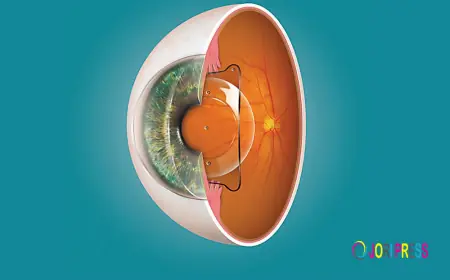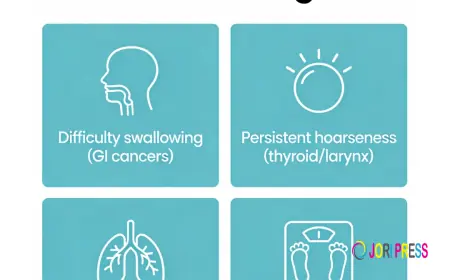The Neuroscience of CBT: How It Changes the Brain

Cognitive Behavioral Therapy (CBT) is one of the most effective and well-researched forms of psychotherapy. It helps individuals reframe negative thought patterns and develop healthier behaviors. But beyond its psychological benefits, CBT has a profound impact on the brain itself. Neuroscience reveals that CBT can physically alter brain structures and functions, leading to long-term improvements in mental health.
This article explores how CBT in Dubai influences the brain, the scientific evidence behind these changes, and why this therapy remains a cornerstone of modern mental health treatment.
How CBT Works: A Brief Overview
CBT is based on the idea that thoughts, emotions, and behaviors are interconnected. By identifying and challenging distorted thinking, individuals can change their emotional responses and actions. Unlike traditional talk therapy, CBT is structured, goal-oriented, and focuses on practical solutions.
But how does this translate into actual brain changes? Research shows that CBT doesn’t just change how people think—it rewires the brain at a neurological level.
The Brain Before CBT: Understanding Maladaptive Patterns
Before diving into how CBT changes the brain, it’s important to understand what happens in the brain when negative thought patterns dominate. Conditions like anxiety, depression, and PTSD often involve overactivity in certain brain regions:
-
The Amygdala: This area processes fear and emotional responses. In anxiety disorders, it becomes hyperactive, triggering excessive worry.
-
The Prefrontal Cortex: Responsible for decision-making and impulse control, this region may underperform in depression, making it harder to regulate emotions.
-
The Hippocampus: Linked to memory, a shrunken hippocampus is common in chronic stress and PTSD, affecting emotional regulation.
These imbalances reinforce negative thinking cycles. CBT intervenes by helping individuals recognize and modify these patterns, which in turn influences brain activity.
How CBT Reshapes Brain Structure and Function
Neuroimaging studies have shown that CBT leads to measurable changes in brain activity and structure. Here’s how it works:
Reducing Amygdala Hyperactivity
One of the most significant effects of CBT is calming an overactive amygdala. Research using fMRI scans reveals that after CBT, individuals with anxiety disorders show decreased amygdala activation when exposed to stressors. This means the brain becomes less reactive to fear triggers, leading to reduced anxiety.
Strengthening the Prefrontal Cortex
CBT enhances the prefrontal cortex’s ability to regulate emotions. Studies indicate that this region becomes more active after CBT, improving rational thinking and emotional control. For people with depression, this shift helps counteract the overwhelming negativity that characterizes the condition.
Restoring the Hippocampus
Chronic stress and depression can shrink the hippocampus, impairing memory and emotional stability. Excitingly, CBT has been linked to hippocampal neurogenesis—the growth of new neurons. Over time, this can restore healthy brain function and improve mood regulation.
Rewiring Neural Pathways
The brain operates through neural networks—pathways that thoughts and behaviors travel through. Negative thinking strengthens unhelpful pathways, while CBT helps build new, healthier ones. This process, called neuroplasticity, means the brain can adapt and change based on experiences.
Scientific Evidence: Brain Changes After CBT
Several studies support the neurological benefits of CBT:
-
A study on OCD patients found that CBT reduced hyperactivity in the orbitofrontal cortex, a region linked to compulsive behaviors.
-
Research on social anxiety disorder showed that CBT decreased activity in fear-related brain areas while increasing connectivity in regions responsible for emotional regulation.
-
In depression, CBT was found to normalize activity in the default mode network, which is associated with self-referential thoughts and rumination.
These findings confirm that CBT doesn’t just provide temporary relief—it fosters lasting brain changes that support mental well-being.
Why CBT’s Brain Changes Matter for Long-Term Recovery
Unlike medications that primarily alter brain chemistry temporarily, CBT teaches skills that lead to enduring neural changes. This is why many people experience long-lasting benefits even after therapy ends. The brain retains its new, healthier patterns, reducing the risk of relapse.
Additionally, because CBT is a learning-based therapy, it empowers individuals to continue applying its principles, reinforcing positive brain adaptations over time.
Conclusion: CBT as a Powerful Brain-Changing Tool
CBT is more than just talk therapy—it’s a scientifically proven method that reshapes the brain. By reducing hyperactivity in fear centers, strengthening emotional regulation areas, and promoting neuroplasticity, CBT offers a sustainable way to improve mental health.
For anyone considering Cognitive-Behavioral Therapy in Dubai, understanding its neurological benefits highlights why it’s such an effective treatment. The brain is capable of remarkable change, and CBT provides the tools to guide that transformation in a positive direction.
If you or someone you know is struggling with anxiety, depression, or other mental health challenges, exploring CBT could be a life-changing decision—not just for the mind, but for the brain itself.
What's Your Reaction?
 Like
0
Like
0
 Dislike
0
Dislike
0
 Love
0
Love
0
 Funny
0
Funny
0
 Angry
0
Angry
0
 Sad
0
Sad
0
 Wow
0
Wow
0



















































